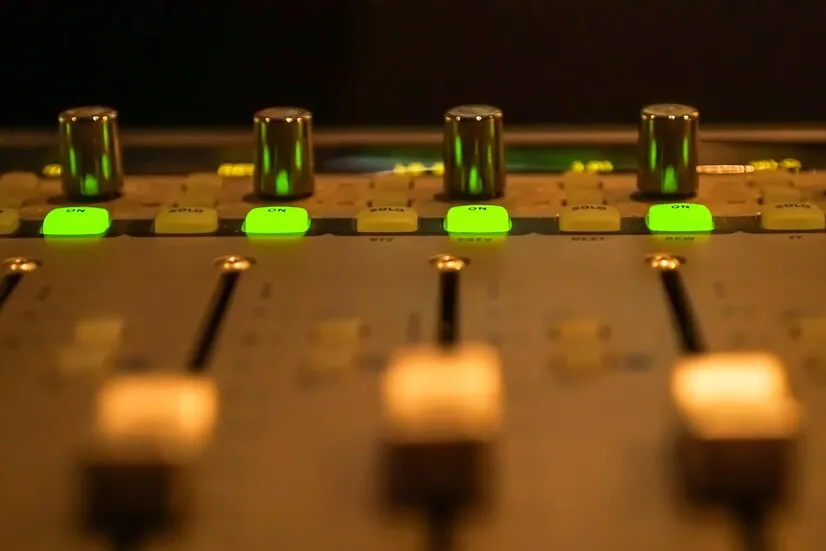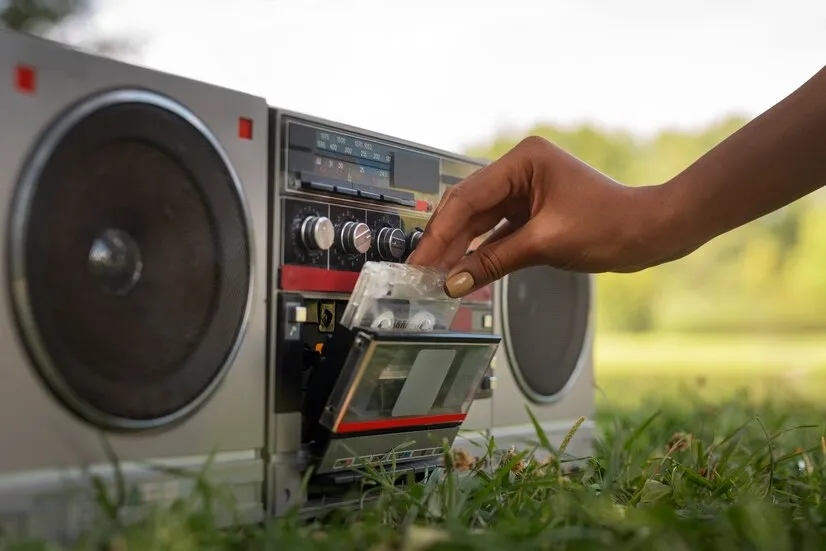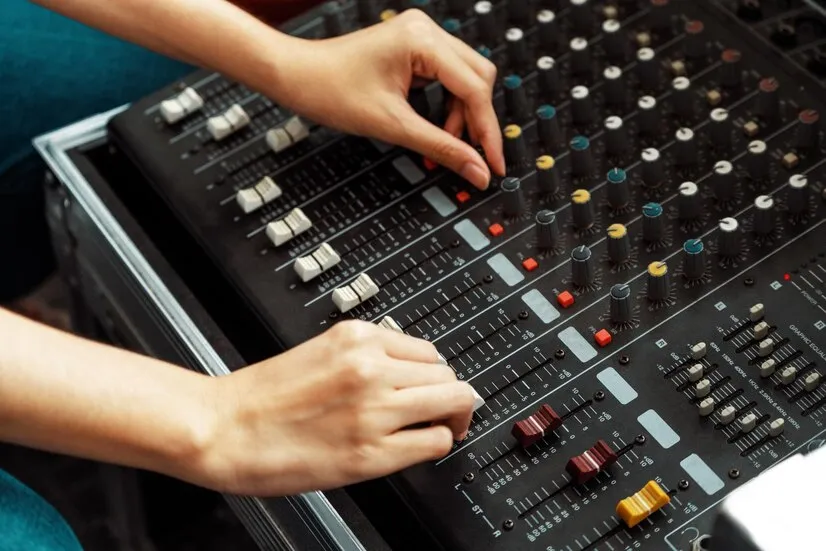Hello, fellow music lovers! Are you ready to delve deeper into audio mixing and discover the secret techniques for professional-level sound expertise? This post will explore ten essential techniques that can enhance your music to achieve the refined, professional sound you’ve always wanted. Whether you’re an experienced producer looking to hone your talent or a novice looking to gain expertise, these techniques serve as key elements of any unique mix This comprehensive guide will provide you with in-depth knowledge in audio processing techniques such as EQ, compression, . Rhythm and panning. If you master these techniques, you can elevate your music to a higher and more sophisticated level. Imagine being able to carefully tone your recordings, enhance the impact and clarity of your sound, adjust tones, and use reverb to make them feel So deep and rich. These techniques are the keys to any successful popular song being heard on the radio.
Choose your favourite headphones, fire up your Digital Audio Workstation (DAW), and prepare to be swept away on an immersive musical adventure. You will learn all ten of the most crucial mixing strategies by the time you finish this article. With this information, you can create mixes that exhibit unique sounds on a variety of audio systems, from car stereos to club speakers.
Let’s dive in and become experts at fracking!
-
Equalisation (EQ): Shaping Your Sound
Let’s begin our exploration of audio mixing with equalisation, or EQ, as it is more often called. Using this powerful instrument, we can mould the audio frequencies of our recordings in the same way a sculptor moulds clay. The secret is to find a happy medium between the lows, mids, and highs. Is it important that your voice be heard clearly? Raise the mids. Require a more forceful bassline? Gently push down on the bass end. In order to shape the overall tone of your mix and offer clarity and depth where it is required, equalisation is vital. It’s an essential skill for any producer looking to make high-quality music.

-
Compression: Taming the Dynamics
Compression is the next crucial method we will cover. Mastering the dynamics of your music is the specialty of this powerful instrument. Portions that are loud will become quieter, and portions that are soft will get louder as a result of compression. Akin to a safety net, it keeps your music in check and balanced. You may tighten up a bassline, make your vocals seem smoother, or give your drums more punch by using compression. Be careful not to overdo it with the compression. However, if you do, your mix will lose its vitality and sound flat and boring. If you want your music to sound professional, mastering compression is a must.
-
Reverb: Creating Depth and Space
An essential component of every audio mixing technique, reverb, is waiting to be explored. To make your recordings seem more expansive and livelier as if they were recorded in a large venue like a cathedral or concert hall, reverb is like a hidden ingredient. It works well for virtual instrument placement or for creating ambient, rich sounds. Finding the sweet spot for each music requires some trial and error with various reverb settings. A little reverb can do wonders for your mix, giving it depth and character and making it sound more engrossing and fascinating.
-
Panning: Placing Instruments in the Stereo Field
The ability to place instruments inside the stereo field is ours when we master the skill of panning. We can make the instruments sound wider and more spaced out by dragging them left to right on the pan control. To get the most out of your stereo setup, try panning the rhythm guitars to the left and right a little bit. Then, make sure the lead vocals are front and centre for the most possible impact and clarity. To pan well, you need to strike a balance between muddying up the mix and letting each instrument stand out. Your audio recordings will gain depth and dimension with this vital but subtle method.

-
Parallel Compression: Adding Depth and Punch
A method that may elevate your songs to new heights is parallel compression; let’s go into it. The process of parallel compression entails combining an instrument’s dry output with a substantially compressed one. This improves the sound’s character, depth, and punch without distorting it. Your tunes will sound larger and more powerful as if you gave them an additional dose of energy.
When applied to percussion, parallel compression makes them hit harder and more noticeable, while applied to voices amplifies their presence and intensity. Finding the sweet spot between dry and compressed signals is the challenge; one extreme might cause dynamics to disappear, while the other could not work at all. Mastering this potent approach requires experimentation.
-
Sidechain Compression: Creating Space for the KickKick
Let’s take a look at Sidechain Compression, a method that may make your kick drum noticeable without making it the main attraction. This technique makes use of the kick drum to dampen the sound of other instruments whenever it strikes. What was the outcome? The KickKick is given more power and presence in the mix via a repetitive “pumping” effect. Although sidechain compression is often used in electronic dance music (EDM) and house, its adaptability makes it a useful tool for any kind of song. With sidechain compression, your music may reach new heights of intensity and clarity, perfect for creating throbbing grooves or dramatic arrangements.
-
Mid-Side Processing: Controlling Stereo Width
Mid-Side (M/S) processing is another sophisticated mixing method that we will examine. This ingenious technique gives us complete command over the stereo picture of our mix by letting us independently modify the mid (the middle) and sides (the stereo width) of a stereo signal.
By using M/S processing, we may improve our voices by amplifying the centre for clarity and expanding the stereo picture of background singers for a roomier sound. This method makes our mix more dynamic and full-bodied, making it easier to lose oneself in the music. With M/S processing, you may precisely shape the stereo field to get a concentrated, forward sound or a broad, expansive impression. You can take your mixes to a whole new level of professionalism and creativity with this powerful tool.
-
Automation: Adding Life and Movement
Let’s take a closer look at automation and how it orchestrates our mix in audio mixing. With automation, we can gradually adjust parameters like volume, panning, and effects, giving our music more life, energy, and feeling.
As an example, automation may be used to emphasise certain words or phrases in a voiceover by altering the loudness. The same holds true for synth pads; by automating the reverb level, you may create a sweeping sound that improves the track’s mood.
By adding a human element via automation, we can make subtle adjustments to the mix that captivate listeners from start to finish. Whether it’s a soft introduction to a song or a loud crescendo in the chorus, automation is a potent tool for making our music more powerful and emotive.
-
Saturation: Adding Warmth and Character
Saturation is a mixing method that we will examine in detail. It involves intentionally distorting the audio source using harmonic distortion. This method may give our music an analogue, vintage vibe by adding character, warmth, and depth.
Tracks or the whole master bus might be saturated to make the mix sound more cohesive. Saturation provides a range of options, from fine-tuned tape saturation to rough tube distortion, giving you the freedom to create the sound you want.
A more dynamic, textured sound that stands out in a mix may be achieved by applying saturation, which also brings out the harmonics. This multi-purpose instrument has the potential to give our tunes more dimension and personality while also improving the listening experience with its hint of analogue warmth and richness.
-
Reference Tracks: A Blueprint for Success
Finally, let’s talk about reference tracks and how important they are as mixing strategies. When you need a reference track for your project, look for a professionally mixed and mastered music that falls into the same genre. To get the best possible mix across all of your speakers and setups, use them as a reference.
If you have reference tracks, you may use them as a benchmark to tweak your mix until it sounds identical in terms of balance, clarity, and mood. Focus on the entire frequency spectrum, the dynamics between instruments, and the balance of the reference track. Find out where your mix may need some work by comparing the two.
You may learn a lot about the norms and best practices in your field by using reference tracks. You can’t improve your mixing abilities or get a professional sound without these essential tools. Be sure to include those reference tracks the next time you’re mixing; doing so will help you achieve a professional, radio-ready final result.
Conclusion: Unleash Your Creative Potential
You have achieved a great feat! You’re now able to take your songs to the next level by using these 10 crucial mixing methods! Since mixing involves both art and science, it’s best to go with your gut and try different things. You can’t use a cookie-cutter approach since every song is different. Now that you have these tools, you may easily create high-quality mixes that will be a hit in any genre.
Get these methods going by launching your digital audio workstation, adding your songs, and pressing play. Explore multi-effects processing, including equalisation, compression, reverb, and panning. Shape your sounds, boost their dynamics, and build a unified soundscape. You may use these tools to create a professional, radio-ready production whether you’re editing an existing song or writing a new one from scratch.
Now that you know how to mix, feel free to let your imagination go wild. Cheers to creating captivating and uplifting music. I hope you like blending!


